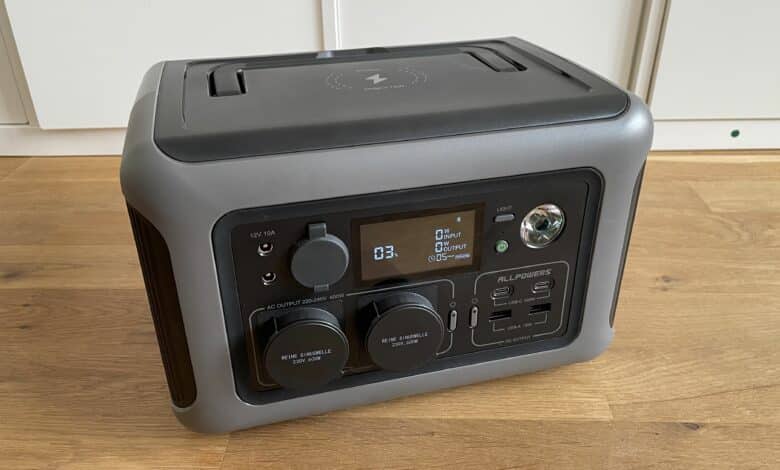
Mobile energy storage in the form of power stations is becoming increasingly popular. One of the main reasons for their success is certainly their flexibility. Many models can be used as a practical power source not only in the van or for weekend camping. On top of that, they serve as a backup in the event of power failures within the user’s own four walls. If the power fails once, the device jumps in and bridges until the power supply is active again. Last but not least, many models offer the option of being recharged not only via a household socket. In most cases, the batteries of the devices can now also be charged with the help of a suitable solar panel. This way, you can produce green electricity on your own and be self-sufficient from any external power source when you are on the go. Today we want to take a closer look at a representative of the compact class. The ALLPOWERS R600, equipped with a 600 watt inverter and a capacity of 299 Wh, not only offers a modern LiFePO4 battery. On top of that, it scores with an attractive price. Whether it is an alternative to big players like Bluetti, EcoFlow or Jackery, you can read in the ALLPOWERS R600 test.
Technical data
| Battery capacity | 299 Wh |
| Battery technology | LiFePO4 |
| AC Input | maximum 400 watts |
| Solar Input | maximum 300 watts |
| Car Input | maximum 200 watts |
| AC Output | 600 watts nominal, 1200 watts peak |
| USB-C Output | maximum 100 watts |
| USB-A Output | maximum 18 watts |
| DC Output | maximum 120 watts |
| Car Output | maximum 120 watts |
| Wireless Charging | maximum 15 watts |
| Light | Yes |
| App operation | Yes |
| UPS Power Supply | Within 10 ms |
| Outputs | 2x AC, 2x USB-C, 2x USB-A, 2x DC, 1x car port, 1x Wireless Charging |
| Dimensions | 285 mm x 195 mm x 190 mm |
| Weight | 5.8 kg |
| Price | € 249.99 * |
ALLPOWERS R600 review: scope of delivery
In the box, you first see a styrofoam cover on which both the manual and digital warranty card can be seen in the form of a QR code. If you take off the cover, you not only see the power station itself. On top of that, ALLPOWERS includes a practical small-format bag that can hold the power cord and solar cable.
ALLPOWERS R600 review: design and workmanship
- Construction is reminiscent of Bluetti EB3A
- Many ports
- Qi charging pad on top
- LED light on the front
With its dimensions of 285 mm x 195 mm x 190 mm and a weight of just 5.8 kg, the ALLPOWERS R600 belongs to the compact power stations. This puts it in the same league as the extremely popular Bluetti EB3A (test). But similarities are not only found in size and design. On top of that, both powerstations have a practical carrying handle on the top that can be folded in and out. There is a reason that the handle can be conveniently folded in.
Namely, there is a Qi charging surface on the top. With the carrying handle folded in, even large-sized smartphones can easily find room for charging here. A look at the front also reveals similarities. The port layout is almost identical. However, the R600 can score with more variety. More about that later.
As with the EB3A, the outputs can be activated or deactivated using physical buttons. The display is also similar, not only in terms of looks, but also size and content. You get important information about battery status, input, output and expected charging time or remaining battery power in a mix of white and blue on a black background. There is also a matching LED light that can send an SOS signal in an emergency.
ALLPOWERS R600 test: connection diversity for many devices
But in one point, the R600 is clearly ahead. For example, it also offers a suitable protective cover for its two Schuko outputs. I sorely miss this on the EB3A. ALLPOWERS stows its inputs for charging the power station on the side. Here you will find suitable inputs for car, solar and power cables. On the underside, the manufacturer again relies on four small rubber feet, which skilfully prevent the small power station from slipping. All in all, the mobile energy storage device scores with a solid build quality, but it cannot keep up with a Bluetti EB3A. The display glass in particular seems a bit wobbly. However, we do not know if this is generally the case or a small quirk of our test device.
In particular, the protection of the connectors ensures that you don’t have to worry about possible damage even in outdoor applications. As a compact energy storage device, a power station should offer one thing above all: plenty of connections. And that’s where the ALLPOWERS R600 does a really great job. Not only do you get two classic Schuko sockets, which offer a maximum of 600 watts of rated power and even 1200 watts at the peak. In addition, you get two DC outputs with a maximum output power of 120 watts and a 12-volt car socket.
This is joined by two USB-A ports with 18 watts, as well as two USB-C ports, both of which offer a whopping 100 watts of power. The respective sections can be turned on and off at the push of a button. I find it cool that the buttons are illuminated. Thus, you can always see at first glance what is currently activated and what is not. ALLPOWERS also provides an illumination for the ON/OFF button. A highlight that is anything but typical in this size category is the Qi charging surface on the top. This supplies your smartphone or another device that supports wireless charging with up to 15 watts of power.
ALLPOWERS R600 review: power station relies on LiFePO4
- LiFePO4 battery technology
- After 3500 charges after at least 80 percent of the original capacity
Next, let’s take a look at the heart of any power station – the battery. For its 299 Wh battery, ALLPOWERS relies on a modern LiFePO4 battery. This technology is a step ahead of the now somewhat outdated lithium-ion technology in some disciplines. On the one hand, this concerns safety.
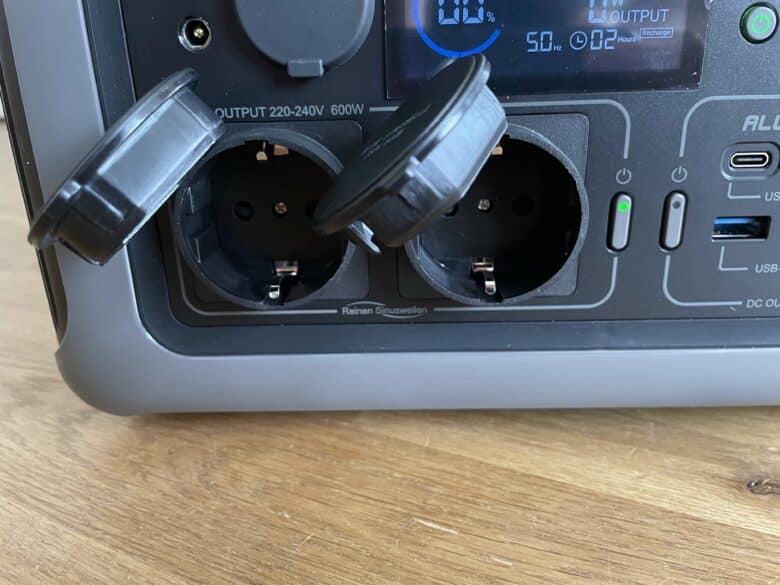
Thus, the risk of fire or even explosion is much lower with LiFePO4 batteries than it is with classic lithium-ion technology. Furthermore, LiFePO4 score with a higher longevity. This is not only sustainable, but also ensures that you get more out of your power station. In view of these advantages, one also gladly accepts the somewhat lower energy density that LiFePO4 batteries have compared to lithium-ion technology.
ALLPOWERS R600 Test: From 0 to 100 in one hour
- Nearly 10 years of life
- On fast charge from 0 to 100 percent within 1 hour
- Power supply is built into the device
The advantages of modern battery technology are also noticeable in the R600. Even after more than 3500 charges, the power station is said to still be able to hold at least 80 percent of its original capacity. With average use, this means an approximate service life of just under 10 years, which is a very good value. Despite its compact size, the ALLPOWERS R600 relies on a built-in power supply. This means that you only have to take the small-sized power supply with you during transport. Unfortunately, this is not a matter of course for all models. For example, the Jackery Explorer 500 (test), which is also quite compact, comes with an external power supply. The onboard charger apparently also provides good charging speeds.
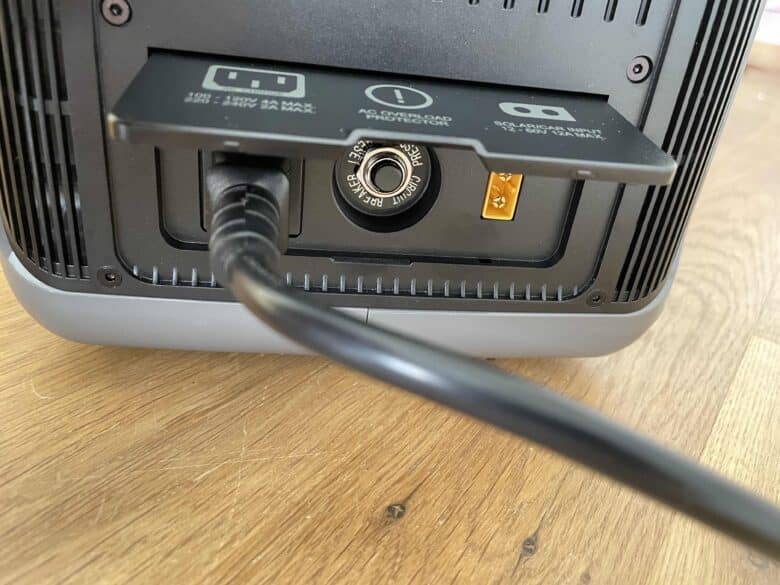
In testing, I was able to charge the R600 from 0 to 100 percent in just under an hour. Fast charging with an impressive 400 watts is possible. However, if you have enough time available, you should do without fast charging. After all, this will damage the life span of a power station in the long run. In order to provide sufficient protection and ensure the longest possible service life, the manufacturer relies on BMS protection. The parameters of the power station, such as temperature and voltage, are monitored to prevent possible damage. However, the mobile energy storage unit can not only be charged via a household socket or car connection. You can also ensure a full battery with the right solar panel. An input power of up to 300 watts ensures that the battery is full within 1.5 hours.
ALLPOWERS R600 review: app control with login requirement
- Settings in app require login with user account
- App gives overview of power station status
Meanwhile, an app is also part of the good tone for powerstations. Accordingly, you also get with the ALLPOWERS R600 a handy smartphone application for iOS and Android. Here you can not only check the status of the power station. You can also make settings on the device. A look at the remaining battery is especially useful. After all, you don’t have to get up every time you go camping and look at the display on the device itself.
But in the test, I noticed a few weak points in the app. It is sometimes a bit confusing. On top of that, the range of functions cannot keep up with that of well-known manufacturers. If you still want to make settings, you are forced to log in with your personal data. Considering the fact that the app does not offer any network functions, I find this a bit unnecessary. However, since this is just software, improvement is definitely possible.
ALLPOWERS R600 Test: The Practical Test
Let’s get to probably the most important question. How does the power station perform in use? Here I can only report positive things. The total of 299 Wh can be easily and conveniently distributed to many different electronic devices. This is ensured by the large number of connections. No matter whether you want to charge your notebook at the USB-C port or your smartphone on the Qi charging surface – the R600 is always generous with its stored power. Even real power guzzlers can be supplied with the necessary energy without any problems. Even devices like a kettle are no problem thanks to 1200 watts of peak power. If the battery is empty, it can be conveniently recharged. You can choose between three different charging modes in the app.
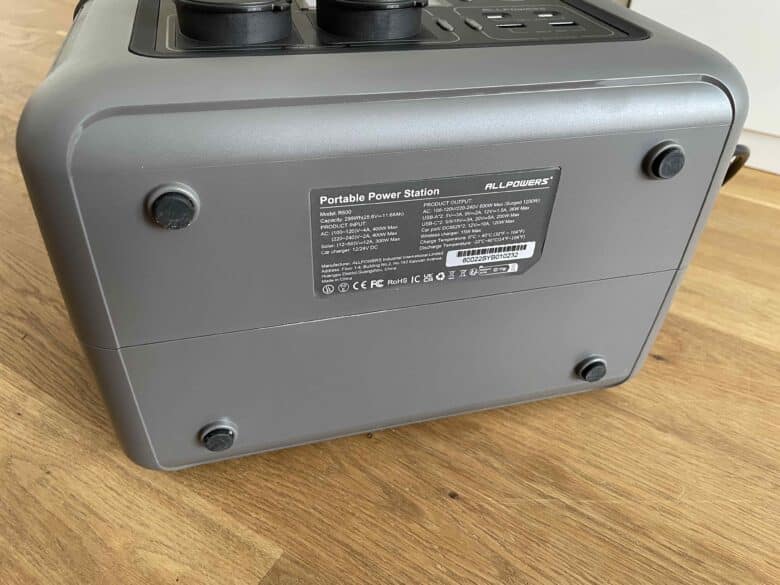
Most gentle for battery and ears is the silent mode. Here, the Powerstation charges with a maximum of 115 watts, which is pleasantly quiet. It gets a bit noisier, but by no means loud, in Standard mode. Here, the Powerstation charges with 285 watts. The fast charging mode is advisable when it has to be fast. In this case, the charging power jumps to a remarkable 429 watts, which charges the battery very quickly, but also produces clearly audible fan noise. Despite its compact size, the ALLPOWERS R600 also scores with an uninterruptible power supply (UPS). This feature supplies your most important electronic devices with the necessary power in case of an emergency. Within just 10 ms, the power station should then be able to step in as an emergency power source.
Conclusion
The ALLPOWERS R600 convinced me in pretty much every respect in the test. With 299 Wh, it not only offers a pleasingly good battery capacity. Since it also relies on modern LiFePO4 technology, you can look forward to a safe as well as durable product. Furthermore, the mobile energy storage scores with a continuous power of 600 watts and is capable of a peak power of 1200 watts on top of that. This means that common electronic devices can be operated without any problems. And not too few of them. Finally, the device scores with an impressive variety of connections. The compact power station feels particularly at home on camping trips or during other outdoor activities.
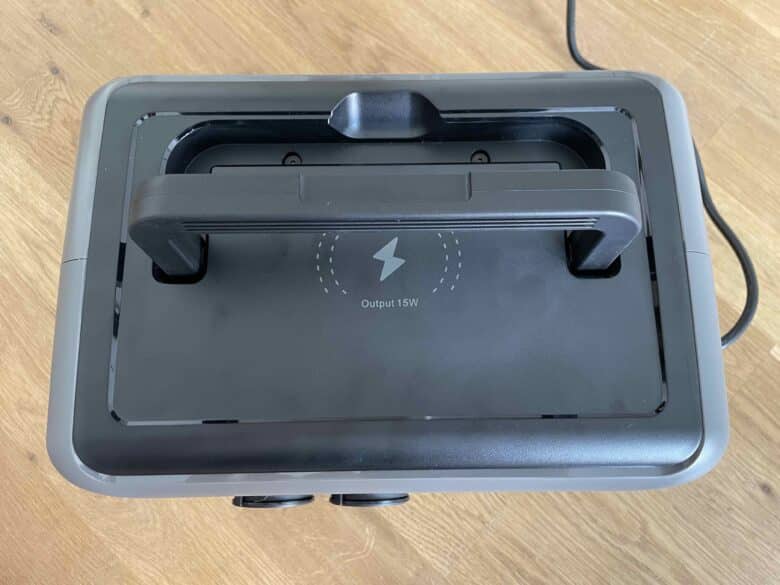
The rugged design with a practical carrying handle makes this clear. The only downers, in my view, are the app and the processing quality of the display. The smartphone application not only offers fewer features than the competition, but also requires logging in with existing Google or Apple user account data despite the lack of network functions. Apart from the app, however, the ALLPOWERS R600 is a real price-performance hit that is impressive and even outshines the competition in terms of connectivity. However, if you can spend a few euros more and don’t place too much value on the many connections, I would advise you to go for the Bluetti EB3A.
ALLPOWERS R600
Workmanship & design
Hardware
Performance
App
Value for money
88/100
The ALLPOWERS R600 scores with connection diversity, great charging performance and a good price.

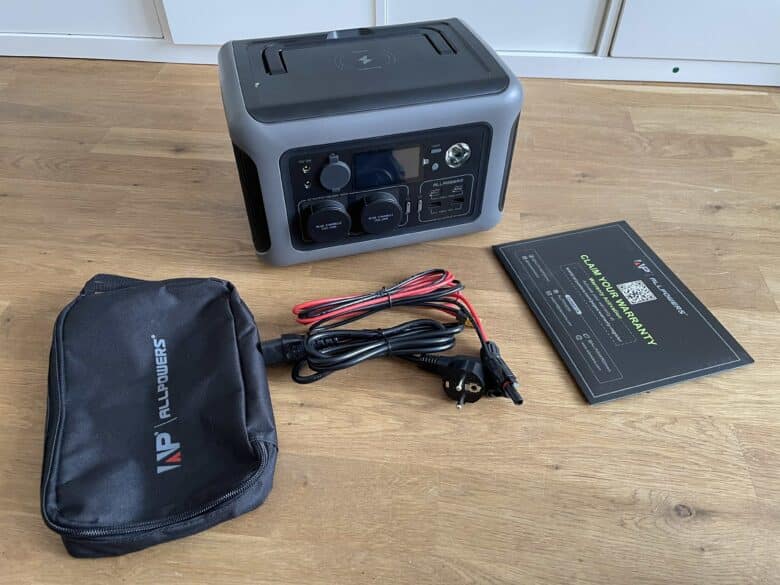
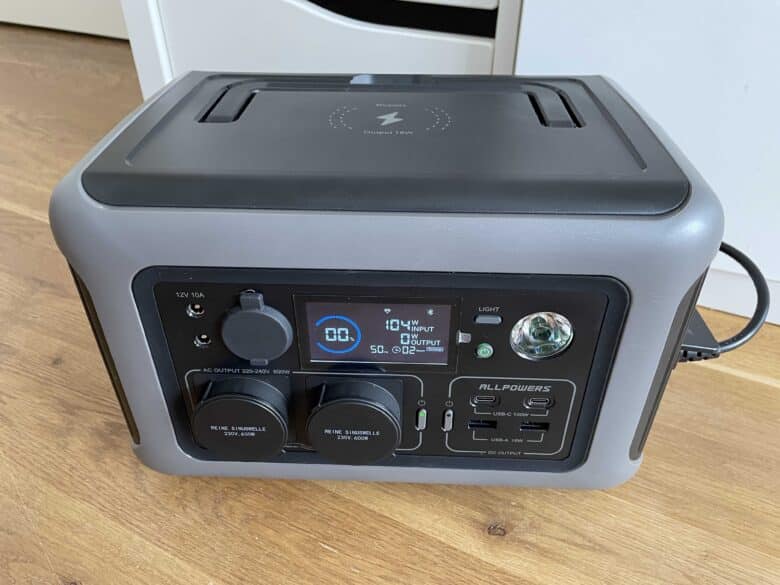
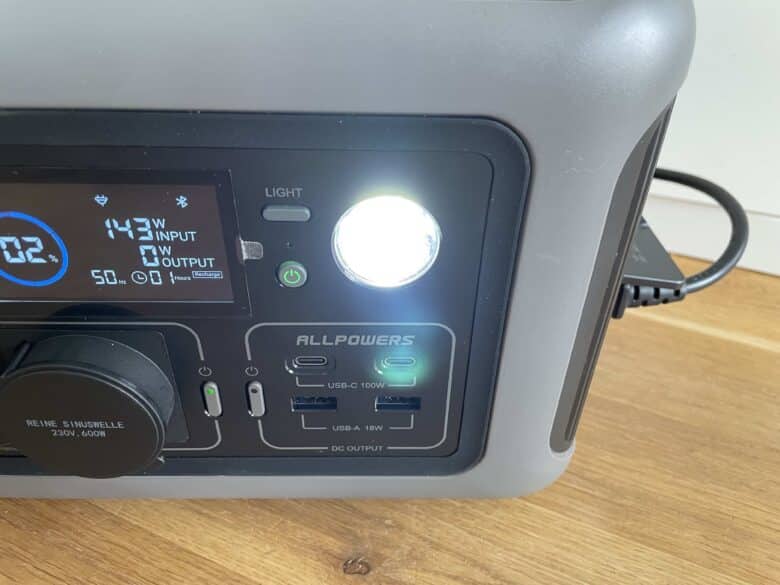
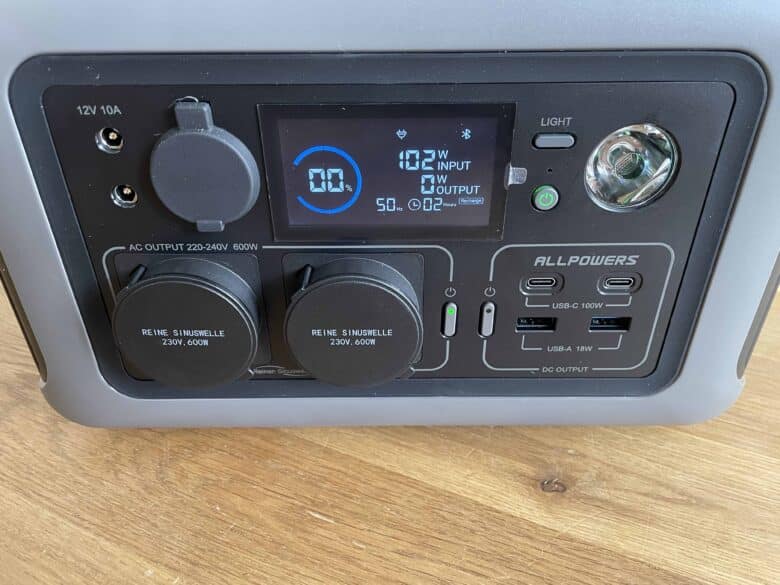
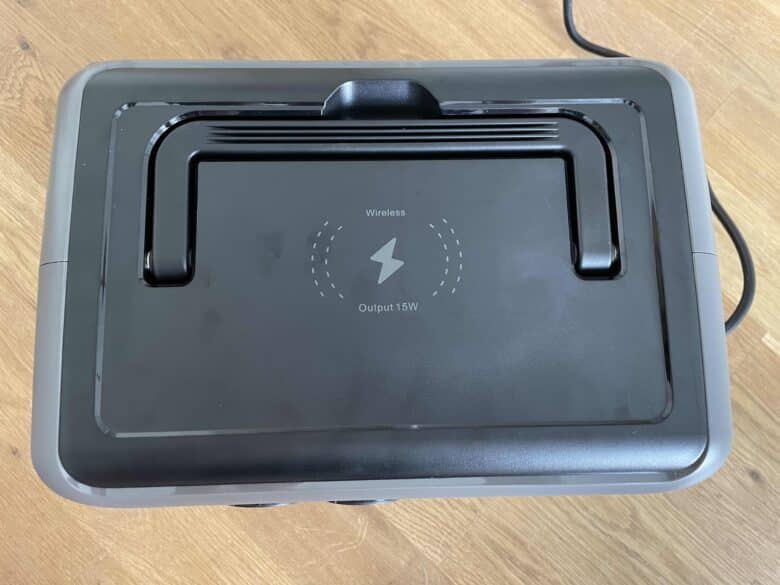
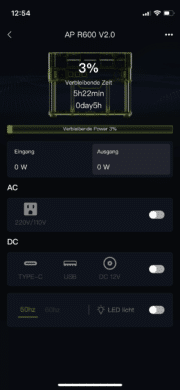



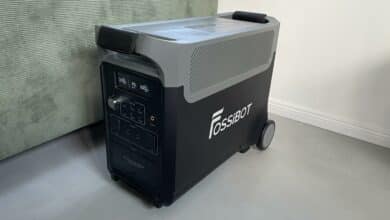

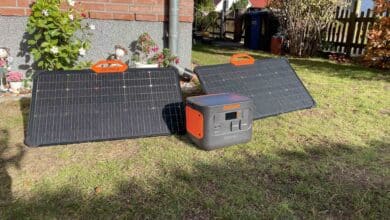
No replies yet
Neue Antworten laden...
Gehört zum Inventar
Beteilige dich an der Diskussion in der Basic Tutorials Community →